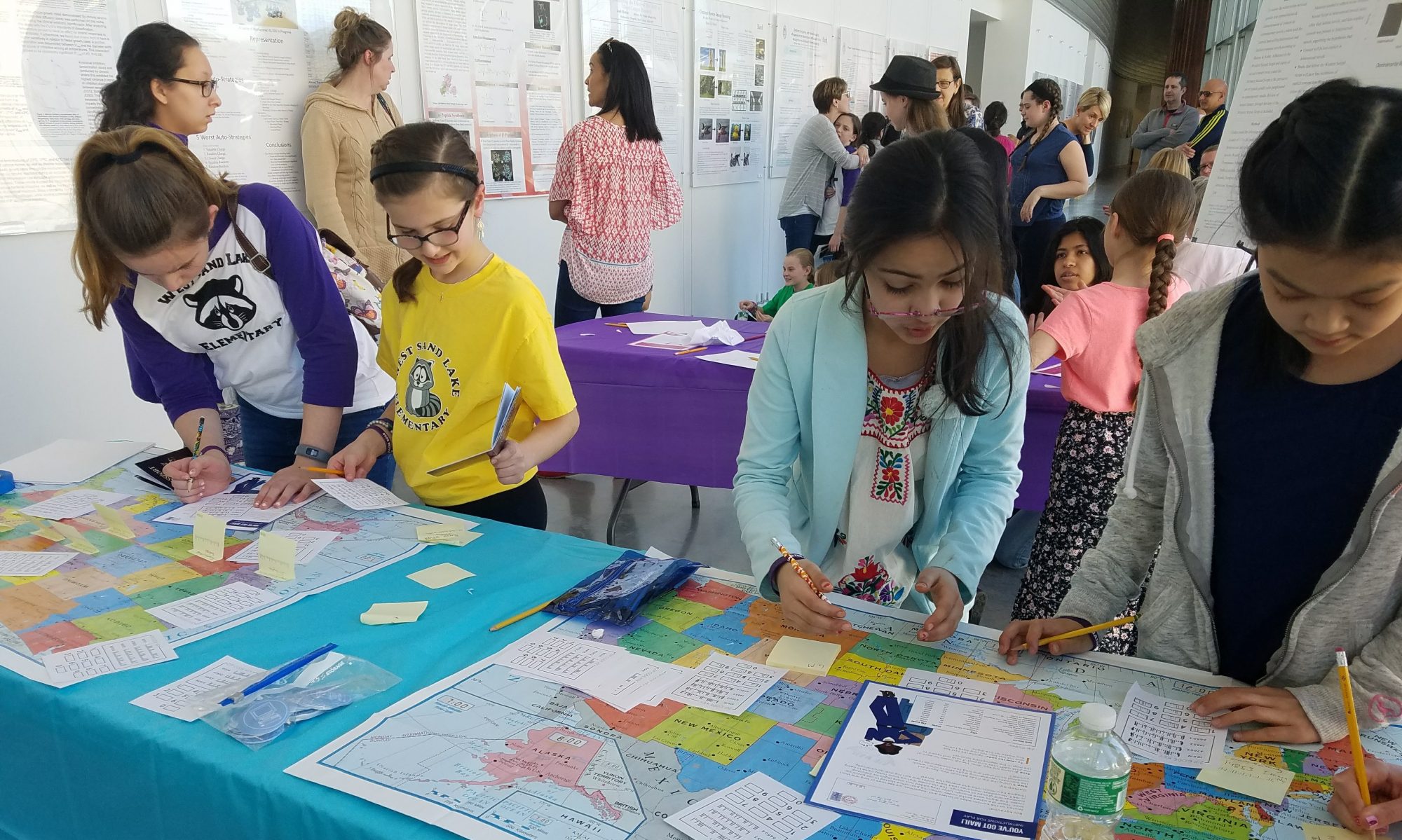2015 Staff:
Senior Staff
 Erin Toliver
Erin Toliver
After earning degrees in mathematics from Bard and Dartmouth Colleges, Erin became a math teacher at Saint Ann’s School in Brooklyn, NY. Now living in Toronto, she funnels her mathematical creativity into knitting, sewing, and crocheting projects. She enjoys cooking, baking, running, and playing board games, but mostly finds herself chasing after her daughter who recently turned five-halves.
 Frances Stern
Frances Stern
Frances teaches math to teachers and students in New York City, working with struggling students and those eager for more and deeper math. She has a master’s degree in mathematics and has written two books for parents and teachers, both titled Adding Math, Subtracting Tension, for grades pre-k to 2 and grades 3-5. Drawing, painting, hiking and most recently folk dancing are favorite non-math activities.
Susan Tarnowicz
Susie is a visual artist who makes paintings, drawings, installations and short form writing. She graduated from the Rhode Island School of Design with a degree in Painting, and has since lived and worked in Italy, VT and NY as a dairy and vegetable farmer, participating in artist residencies, and teaching both middle school and high school art. While teaching middle school girls she discovered the pragmatics of Mathematics in art education and designed curriculum to support learning in both subjects. This summer Susie was awarded two artist residencies through the Byrdcliffe Colony in Woodstock NY and the The Dune Shacks in Cape Cod MA through Peaked Hill Land Trust for whom she feels extremely grateful. Most recently Susie moved across the river to Germantown NY pursuing her career in Art Education, and is thrilled to be teaching Mathematical Art at the Bard Math CAMP.
Maureen Black
Maureen retired after teaching in Computer Science in high school for 33 years, and is now an adjunct professor at Marist College in Computer Science and Mathematics. When not in the classroom, Maureen hosts open mics and performs with her husband in the folk duo Never Too Late. Outside of math and computer science, her passion is for live music, most especially singer-songwriters performing their own original songs.
Junior Staff
 Najee Mcfarland-Drye
Najee Mcfarland-Drye

Zechen Zhang
Zechen is a rising sophomore who intends to major in physic and math with a concentration in philosophy. He has participated in various math competitions throughout his education and during these was introduced to the joy of a challenging problem. When he isn’t holding paper and pen you can find him playing basketball, watching youtube videos and traveling anywhere in the world.
Jessica plans to moderate in math at Bard this upcoming year. She volunteered with the Bard Math Circle throughout the last school year and is very excited to engage with and inspire the students this summer. Outside of her mathematical interests she spends her time working on the Bard EMS squad and reading.
 Andres Mejia
Andres Mejia
Andres is a rising Sophomore at Bard College and is a native New Yorker from Queens. He’s been independently studying advanced math through online course work since he was the age of the students coming to C.A.M.P. Right now he’s excited about taking Real Analysis in the fall. In his free time he can be found playing guitar or listening to music.
Administration
 Program Director: Japheth Wood, PhD
Program Director: Japheth Wood, PhD
Japheth is a math professor at Bard College, whose involvement in the math circle movement has included directing the New York Math Circle, helping lead the Math Association of America‘s SIGMAA on Circles, as well as co-founding and co-directing the Bard Math Circle. Japheth envisions math circles as an effective way for mathematicians around the world to make a greater impact on math education at all levels, as well as opportunity to refresh and innovate their own teaching. He has also worked extensively with pre-service math teachers through Bard’s Master of Arts in Teaching program, supervised math research project in the Bard Prison Initiative, and is now working with the Bard undergraduate college.
 Program Director: Lauren Rose
Program Director: Lauren Rose
Lauren Rose has been a mathematics professor at Bard College since 1997. She received her PhD in Mathematics from Cornell University and has taught mathematics at Cornell University, Rutgers University, Ohio State University, and Wellesley College, in addition to Bard College. She is the co-founder of the Bard Math Circle and the Mid-Hudson Math Teachers Circle, which provide enrichment programs for middle school students and teachers in the Hudson Valley. She is also Director of the Math Major in the Bard Prison Initiative. Her current research interests include the Mathematics of Puzzles and Games, Voting Theory, and Integer Splines.
Program Coordinator: Eliana Miller
Eliana Miller is a senior at Bard College who has worked as the student coordinator of the Math Circle for the past two years. She is passionate about mathematical education outreach and is enthusiastic about the second season of C.A.M.P. this summer. Her academic interests are in logic and philosophy of math. She is currently working on her senior project on the combinatorics of KenKen Puzzles.



























